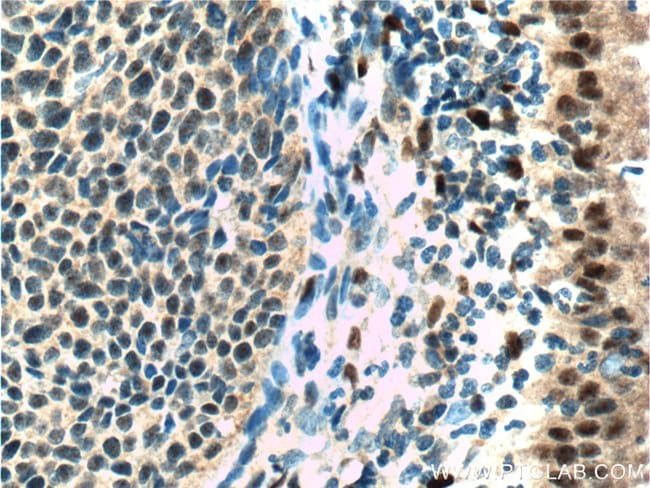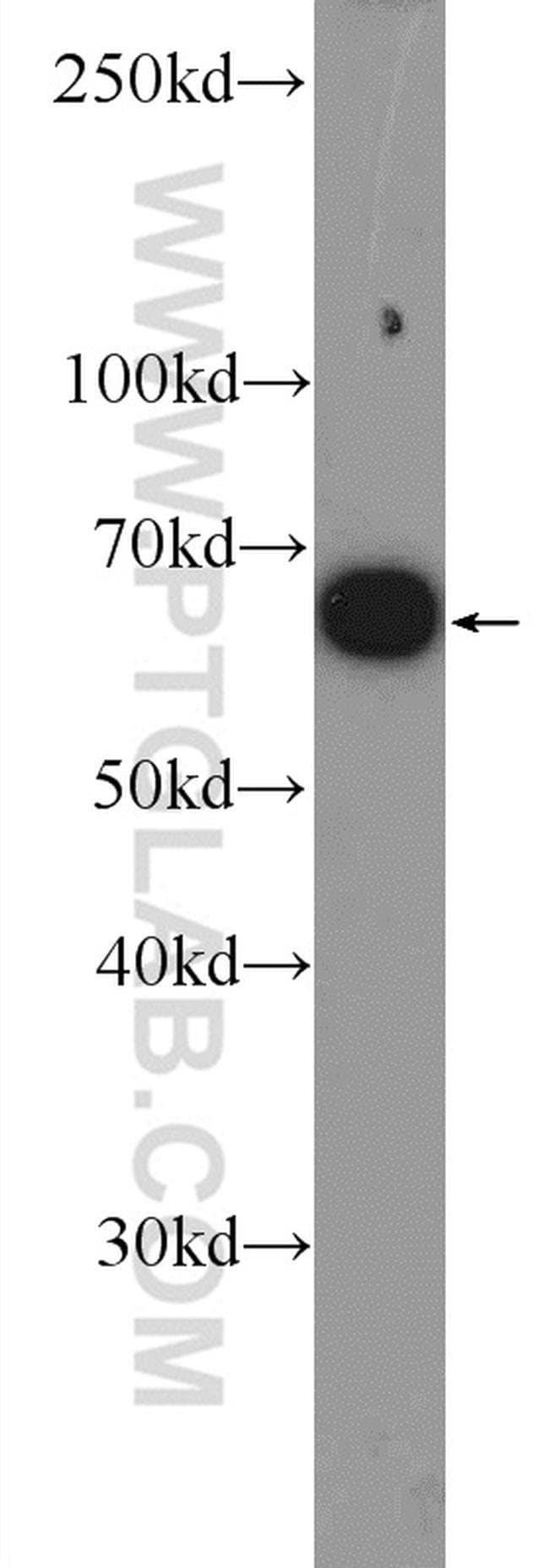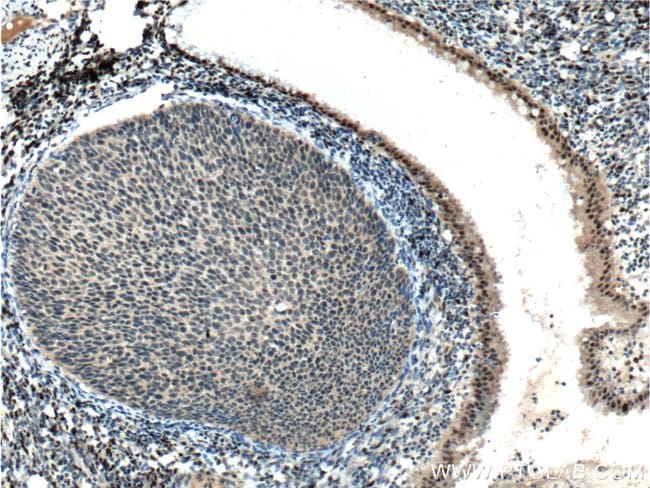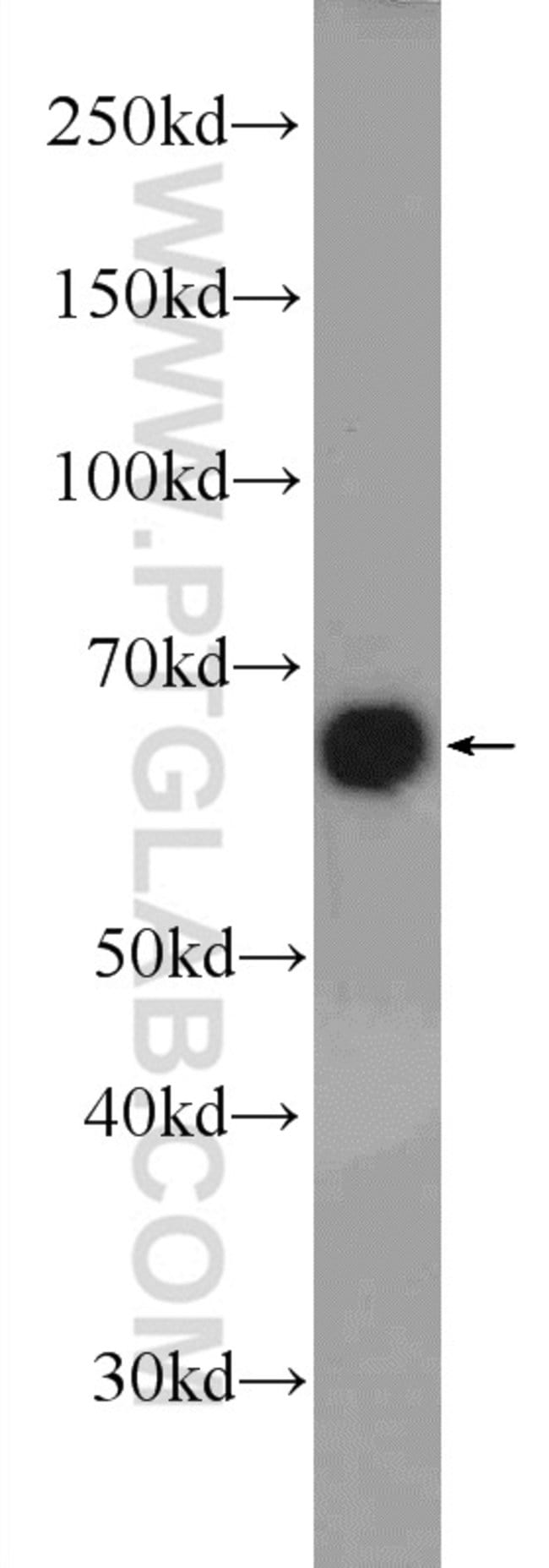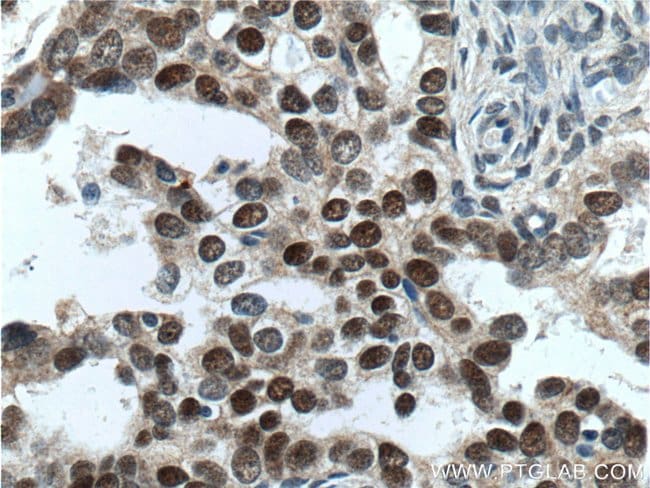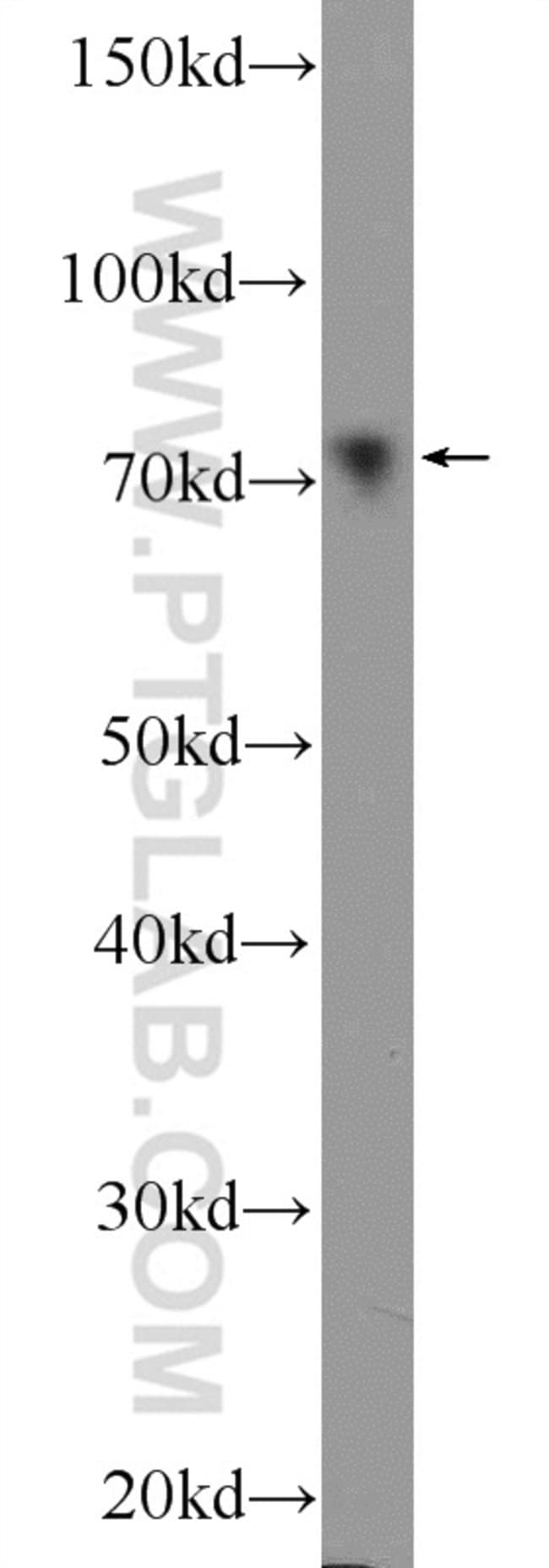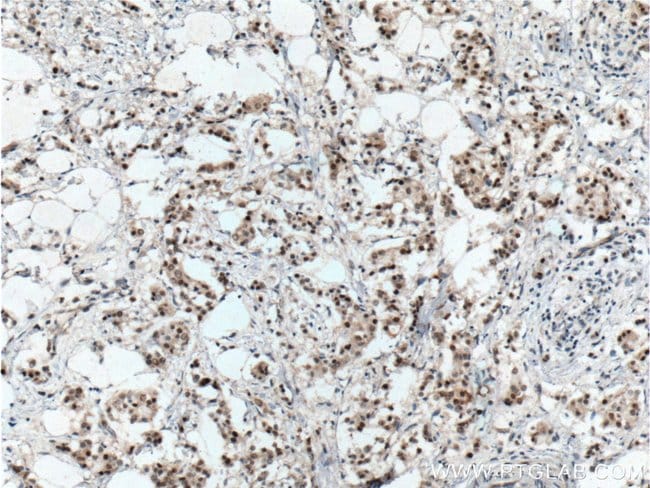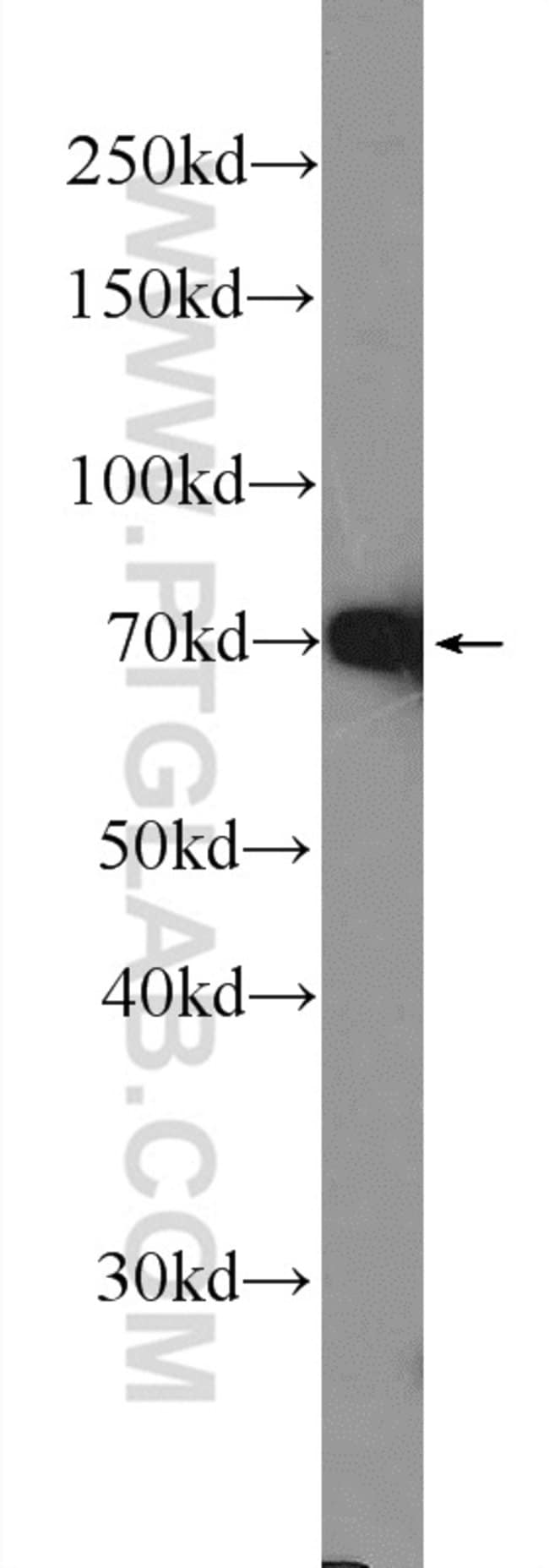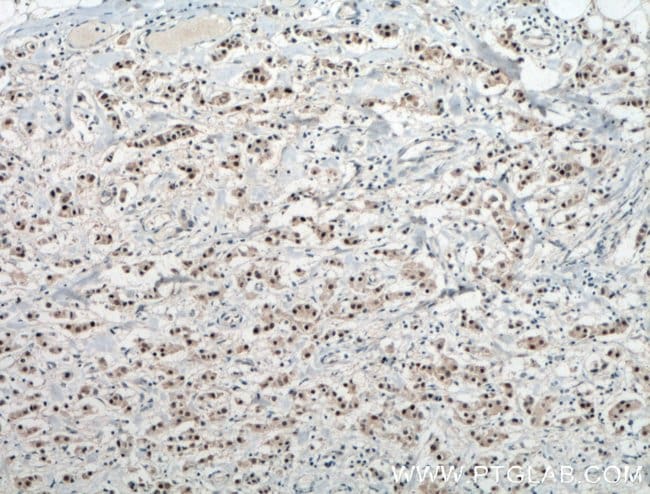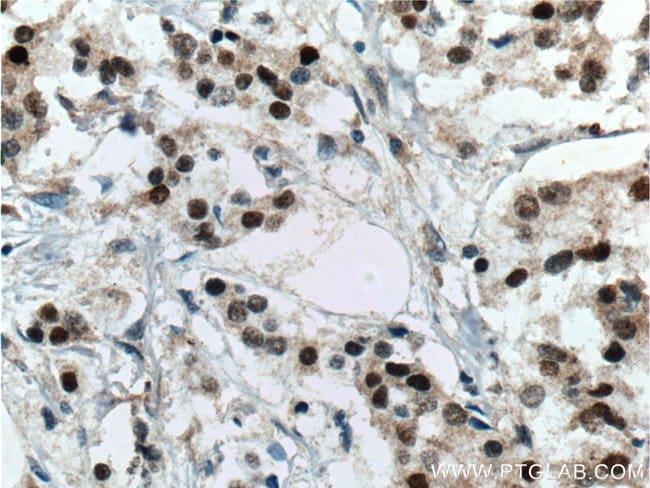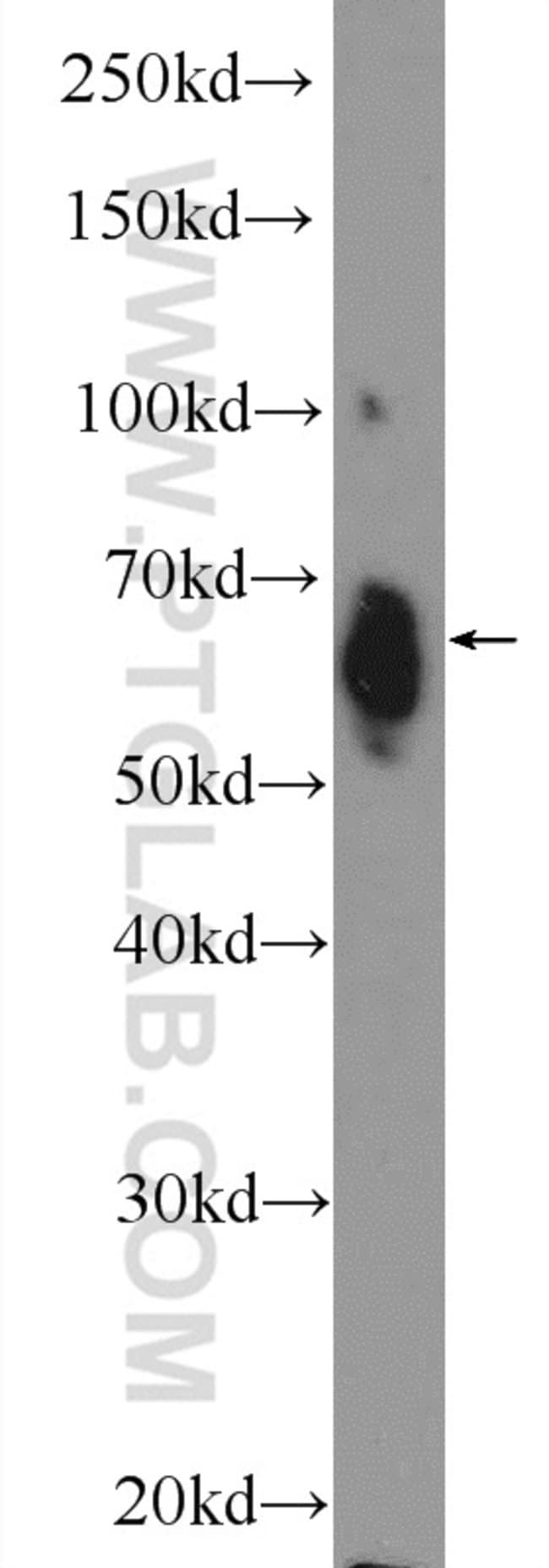Proteintech ER Rabbit anti-Human, Mouse, Rat, Polyclonal, Proteintech
Rabbit Polyclonal Antibody
Additional Details:
Weight:
0.00010kg
Specification
| Antigen | ER |
|---|---|
| Applications | Immunohistochemistry (Paraffin),Western Blot |
| Classification | Polyclonal |
| Concentration | 0.5 mg/mL |
| Conjugate | Unconjugated |
| Formulation | PBS with 50% glycerol and 0.1% sodium azide; pH 7.3 |
| Gene | ESR1 |
| Gene Accession No. | P03372, P06211, P19785 |
| Gene Alias | ER, ER alpha, Era, ESR, ESR1, ESRA, Estradiol receptor, Estrogen receptor, estrogen receptor 1, NR3A1 |
| Gene Symbols | ESR1 |
| Host Species | Rabbit |
| Immunogen | ER Fusion Protein Ag15738 |
| Purification Method | Antigen Affinity Chromatography |
| Quantity | 150 μL |
| Regulatory Status | RUO |
| Primary or Secondary | Primary |
| Gene ID (Entrez) | 13982, 2099, 24890 |
| Target Species | Human,Mouse,Rat |
| Content And Storage | -20°C |
| Product Type | Antibody |
| Form | Liquid |
| Isotype | IgG |

